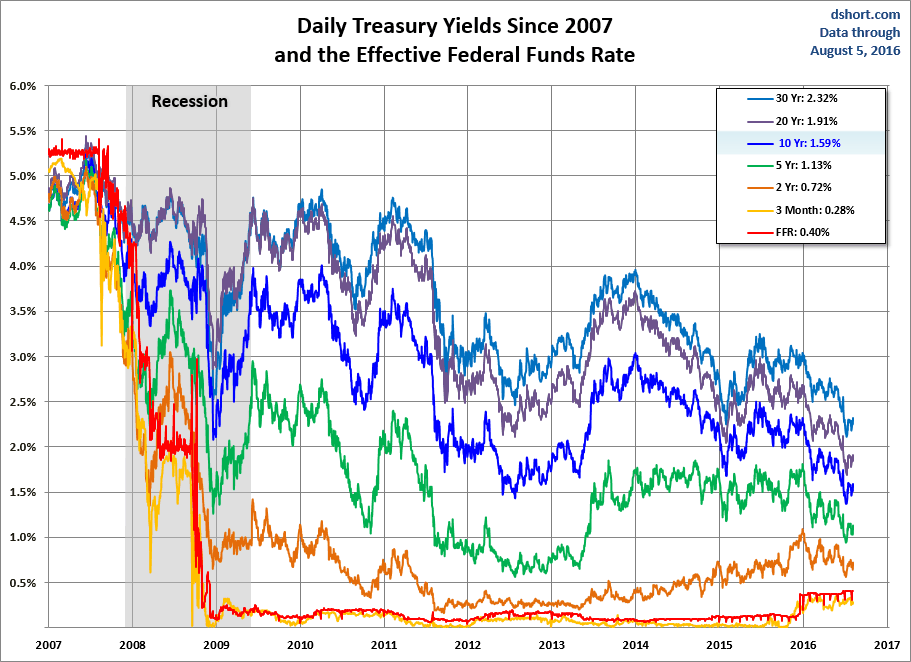Results 1 to 1 of 1
Thread Information
Users Browsing this Thread
There are currently 1 users browsing this thread. (0 members and 1 guests)
Threaded View
-
07-14-2011, 09:09 PM #1Senior Member


- Join Date
- May 2007
- Location
- South West Florida (Behind friendly lines but still in Occupied Territory)
- Posts
- 117,696
Q E Rounds 1 & 2 Hurt the Economy: Bernanke Wants Rd 3

Quantitative Easing Rounds 1 and 2 Hurt the Economy ... Bernanke Proposes Round 3
Jul. 13, 2011, 5:34 PM
many links on this post
Federal Reserve chairman Ben Bernanke is hinting at a third round of quantitative easing.
But Dallas Federal Reserve Bank president Richard Fisher said today:
I firmly believe that the Federal Reserve has already pressed the limits of monetary policy. So-called QE2, to my way of thinking, was of doubtful efficacy, which is why I did not support it to begin with. But even if you believe the costs of QE2 were worth its purported benefits, you would be hard pressed to now say that still more liquidity, or more fuel, is called for given the more than $1.5 trillion in excess bank reserves and the substantial liquid holdings above the normal working capital needs of corporate businesses.
Indeed, Bernanke knew in 1988 that quantitative easing doesn't work:
Ed Yardley notes:
Two economists, Seth B. Carpenter and Selva Demiralp, recently posted a discussion paper on the Federal Reserve Board's website, titled "Money, Reserves, and the Transmission of Monetary Policy: Does the Money Multiplier Exist?" [Here's the link.]
[The study states:] "In the absence of a multiplier, open market operations, which simply change reserve balances, do not directly affect lending behavior at the aggregate level. Put differently, if the quantity of reserves is relevant for the transmission of monetary policy, a different mechanism must be found. The argument against the textbook money multiplier is not new. For example, Bernanke and Blinder (198 and Kashyap and Stein (1995) note that the bank lending channel is not operative if banks have access to external sources of funding. The appendix illustrates these relationships with a simple model. This paper provides institutional and empirical evidence that the money multiplier and the associated narrow bank lending channel are not relevant for analyzing the United States."
and Kashyap and Stein (1995) note that the bank lending channel is not operative if banks have access to external sources of funding. The appendix illustrates these relationships with a simple model. This paper provides institutional and empirical evidence that the money multiplier and the associated narrow bank lending channel are not relevant for analyzing the United States."
Did you catch that? Bernanke knew back in 1988 that quantitative easing doesn't work. Yet, in recent years, he has been one of the biggest proponents of the notion that if all else fails to revive economic growth and avert deflation, QE will work.
(Indeed, a large percentage of the bailout money went to foreign banks (and see this). And so did most of money from the second round of quantitative easing.)
I pointed out in January:
The stated purpose of quantitative easing was to drive down interest rates on U.S. treasury bonds.
But as U.S. News and World Reported noted last month:
By now, you've probably heard that the Fed is purchasing $600 billion in treasuries in hopes that it will push interest rates even lower, spur lending, and help jump-start the economy. Two years ago, the Fed set the federal funds rate (the interest rate at which banks lend to each other) to virtually zero, and this second round of quantitative easing--commonly referred to as QE2--is one of the few tools it has left to help boost economic growth. In spite of all this, a funny thing has happened. Treasury yields have actually risen since the Fed's announcement.
The following charts from Doug Short update this trend:



Of course, rather than admit that the Fed is failing at driving down rates, rising rates are now being heralded as a sign of success. As the New York Times reported Monday:
The trouble is [rates] they have risen since it was formally announced in November, leaving many in the markets puzzled about the value of the Fedâs bond-buying program.
***
But the biggest reason for the rise in interest rates was probably that the economy was, at last, growing faster. And thatâs good news.
âRates have risen for the reasons we were hoping for: investors are more optimistic about the recovery,âJoin our efforts to Secure America's Borders and End Illegal Immigration by Joining ALIPAC's E-Mail Alerts network (CLICK HERE)


 LinkBack URL
LinkBack URL About LinkBacks
About LinkBacks






 Reply With Quote
Reply With Quote

2 foreign nationals in ICE custody after alleged attempted...
05-18-2024, 07:35 AM in General Discussion